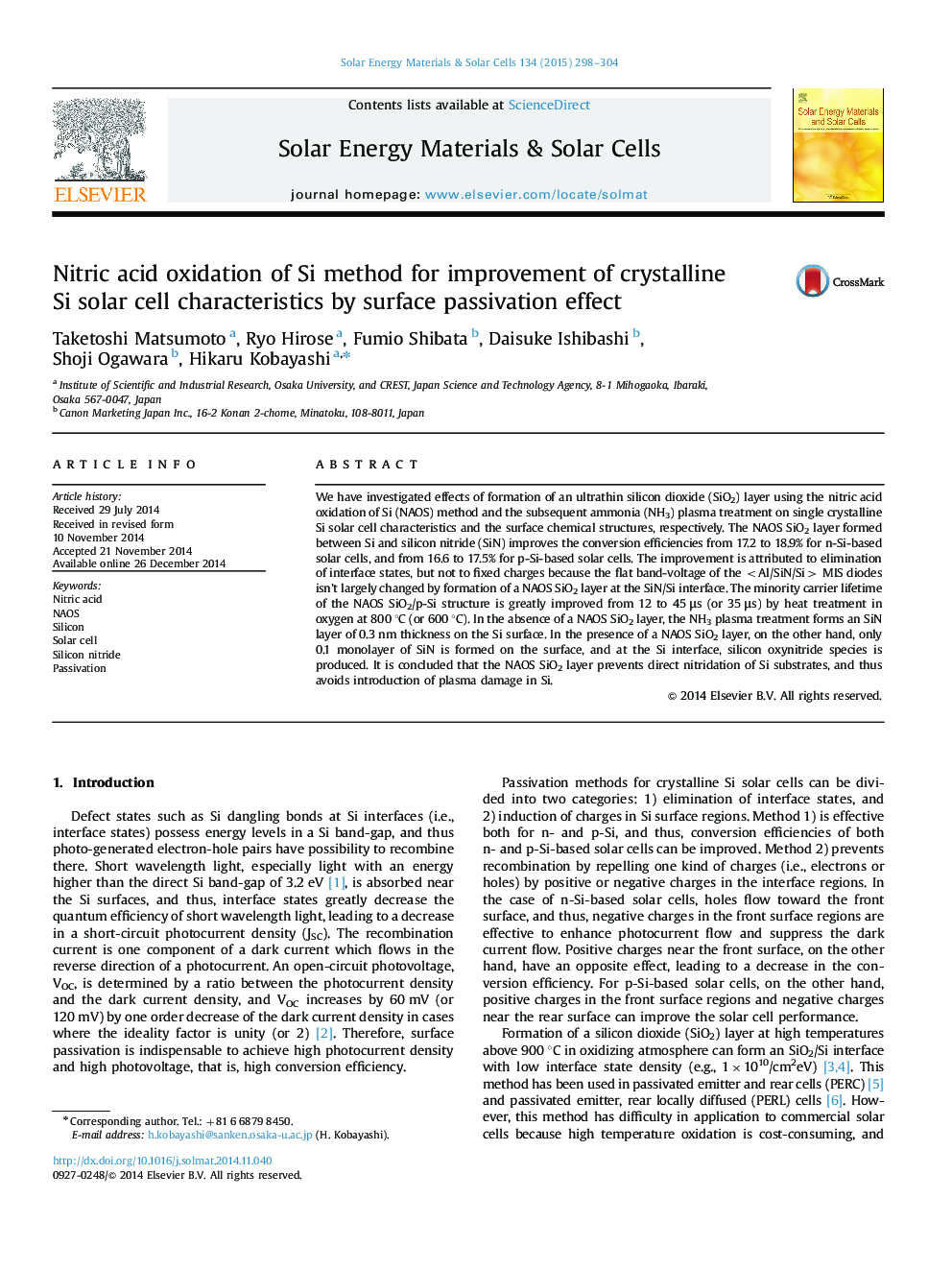| Article ID | Journal | Published Year | Pages | File Type |
|---|---|---|---|---|
| 77920 | Solar Energy Materials and Solar Cells | 2015 | 7 Pages |
•n- and p-Si-based solar cells were improved by a nitric acid (NAOS) SiO2 layer.•Interface state density was ultralow at a NAOS SiO2/Si interface.•Plasma damage during the SiN layer deposition was avoided by a NAOS SiO2 layer.•A NAOS SiO2 layer prevented direct nitridation during SiN deposition.•Heat treatment (600~800 °C) improved carrier lifetime of the NAOS SiO2/Si structure.
We have investigated effects of formation of an ultrathin silicon dioxide (SiO2) layer using the nitric acid oxidation of Si (NAOS) method and the subsequent ammonia (NH3) plasma treatment on single crystalline Si solar cell characteristics and the surface chemical structures, respectively. The NAOS SiO2 layer formed between Si and silicon nitride (SiN) improves the conversion efficiencies from 17.2 to 18.9% for n-Si-based solar cells, and from 16.6 to 17.5% for p-Si-based solar cells. The improvement is attributed to elimination of interface states, but not to fixed charges because the flat band-voltage of the
